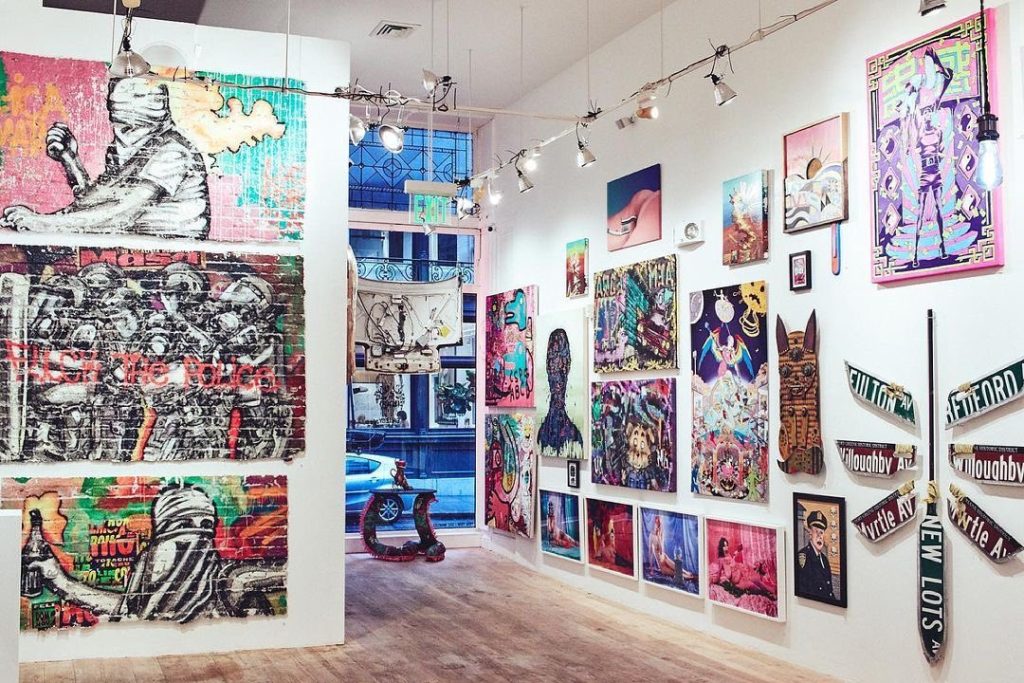Today we are joined by none other than Superchief Gallery’s Ed Zipco! We’re excited to talk with Ed about our ongoing NFTS.WTF interview series about traditional art galleries entering the NFT sphere. Today’s article, transcribed from a fabulous interview via Zoom, will be the first of three parts with Superchief NYC, so please check back to gain more valuable insights from the gallerist leading the way. Ed, Thank you so much for your time and for allowing us to bring your insights on the NFT market at large, specifically about galleries that have traditionally shown artists pre-NFT world.
Rebecca: You’ve been working with digital artists for six years already and launched the first NFT art gallery, which is pretty amazing! Your first NFT exhibition involved major traditional artists like Logan Hicks, Alex Schafer, Ron English, etc. From a gallerists’ perspective, what was the onboarding process like for traditional artists entering the NFT sphere? Did you have to set up a Metamask wallet for each artist and talk with them about minting?
Ed: Across the board, in March, many artists were unaware of the crypto and NFT world, and their experience ran the gambit. Our first exhibition was about introducing NFTs to our community and then our community to the NFT market, so I feel calling our first show “Season One Starter Pack” was really accurate. For that first group show, we worked with artists to mint for them where the minted works actually say Superchief Gallery as the creator, and we had paper contracts and emails going back and forth to make it known that it was official. I was concerned that artists might rush into the world of crypto and then lose their seed phrase or do something that would damage them long term. We have a long relationship with these artists, some going back ten years, so for me, the most important thing was that their entrance to NFTs was safe, and we’d be giving them a positive experience acting as a custodian in that first wave. Since that is also how Nifty Gateway approaches it, I realized that the creator is always Nifty Gateway. It gave us a little more confidence that we were entering the market in a way that was already happening. After which we’d be able to talk to artists from that point to slowly teach them how to create their wallets, build different relationships with the marketplaces that we curate for or interact with in addition to our own marketplace, and try to find the best and right audience for them online.
Rebecca: That’s interesting that the minting initially originated from the SuperChief wallet.
Ed: For that first exhibition, it was really about us creating an account on OpenSea and bringing our artists’ artwork through that with their information, artwork details and descriptions, and making it, so we have a long relationship with our artist base and our collector base in the art world as a whole. The idea that we would be able to be a trusted, check-verified existence on OpenSea would allow people to feel that they’re getting the real deal. It was a big responsibility to run the accounting for that, and I see what marketplaces go through on a larger scale. It was really important to safely onboard our artists and guide them through the early stages of it. There’s still a lot where our guidance and strategy are a priority today, but at this point, the majority of our artists are starting to make their wallets and be a little more ready.
Rebecca: Yet for the “Cicada and Tymbal” show, which opened at the end of July, Swoon minted those works, right? And then transferred the NFTs to the Superchief Gallery wallet, so you became the custodian until the works find their collectors, is that the second approach you guys have?
Ed: Yes, we worked with her team to teach them the good practices of how to actually have their own wallet and how to get their Coinbase so they can get their money out of crypto when they want to. All of those steps were the beginning of phase two that we’ve been doing, which is encouraging artists to have their autonomy now that they’re ready for it.
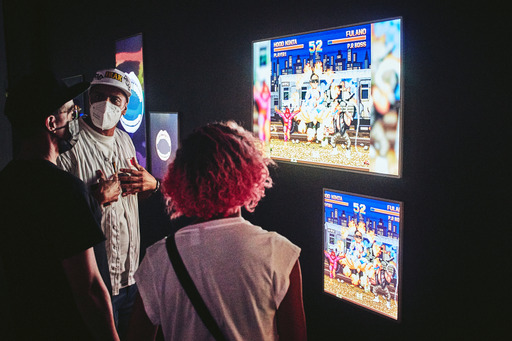
Rebecca: The crypto and NFT art world is a black and white issue for many gallerists, yet some galleries in the crossover are intrigued by it but have no footing as to where to start. So knowing what you know now, would you suggest that galleries having their first NFT exhibition mint the artists’ genesis works, help guide them into safe practices, help onboard them into crypto art, and later transitioning towards showing works that are then minted from the artists’ wallets? Is there anything you would have done differently or changed knowing how to help other galleries get into the space?
Ed: For us, it was a bit of a time-specific moment. With the amount of education that everyone has gone through in the last four months, I feel that a much larger percentage of artists are starting to become familiar with it, and in practice, I will be transparent. Many artists are still just learning about it, and they could need that sort of help from their galleries. There’s an important responsibility on a gallery that has real relationships to their artists, that will walk step by step with their artists into this world. I think that for the traditional art world, it’s still so new. There are many ways for people to guide their artists through it.
We actually opened up a consultant arm of our gallery, so now we can properly consult artists that we work with as well as artists that we don’t work with. We also consult for several different galleries now, and there are other people that we’ve signed NDAs with that we can’t discuss who we’ve consulted with also. It’s been really wonderful. Strategy is still super important -how you roll things out, how you talk about those things you’re rolling out, but above all, these are opportunities to connect with your community and connect with your audience as an artist. Encouraging artists and guiding them to a place where they can take that really seriously and embrace the opportunities that are being laid out, that’s our highest and best use.
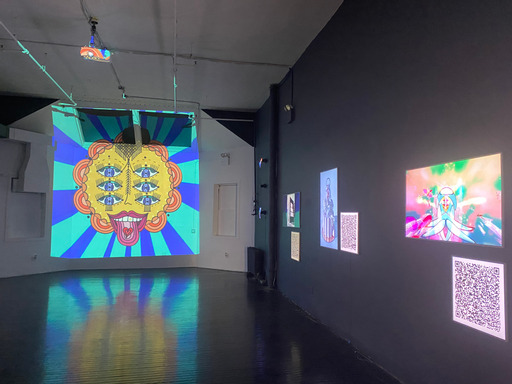
Rebecca: The consulting arm that you’re building to go along with the Superchief brand will even more solidify your leadership in the space, so that’s great to hear.
Ed: It’s really about information sharing. Some of the best conversations I’ve had are with other CEOs and tech firms that are really doing incredible work. It’s those types of conversations that get us from A to Z. Like sharing information, market trends, strategies on the day in and day out, but even more so really dialing it into the relationships in the community is the core of it all.
Rebecca: It’s the core, not to overuse the buzzword of decentralization, but it’s also the decentralization of knowledge.
Ed: Exactly.
Rebecca: Another thing that galleries are worried about when talking about artist autonomy and decentralization is that galleries don’t want to enter the space because they’re worried they’re going to get cut out of revenue or proceeds from artists’ sales, which is a valid concern. There’s a big enough pie for artists to succeed with or without galleries, and brick and mortar IRL galleries showing NFTs is going to be essential for mainstream, widespread adoption.
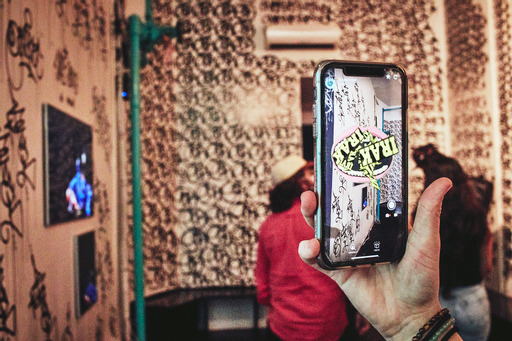
Ed: Absolutely.
Rebecca: But not all galleries understand that there are ways to split revenues between artist and gallery through smart contracts, the concept of royalties after the sale on secondary, or talking about who the original creator of the wallet is and why that difference is matters. It’s not just a one time sale where the work is bought from a gallery, and the transaction is done, and the sale is split between them and the artist, but when you roll into secondary markets and revenues, it’s interesting that a lot of gallerists whom I’ve spoken with have no idea how to navigate being able to still get a slice of that initial sale as well as portions of recurring sales on works they’ve helped place in collections, not being a part of secondary, which could all be solved with smart contracts that specify those parameters to each gallery’s and artist’s liking. Every gallery may need to get a dev to write a smart contract just like they’d need to get legal support to write a paper contract specifying all the details. As a gallerist in the space that’s helping pave the way and lay the groundwork for other galleries to follow suit and learn from, do you think that’s it’s going to be essential that galleries show NFTs if it fits with their programming and how much of a percentage should they take? Should it be 50/50?
Ed: Absolutely not. First of all, I think galleries who don’t want to engage with this is because they’re afraid that the democratization of access to artists is going to put them out of business. If that is their fear, they didn’t have a business model to begin with. I think if they’re afraid that suddenly being the doorway to purchase the artwork from them is closed if that’s the only thing they’re bringing to the table, then they should be afraid. I think that’s very accurate. But those are the same fears they put on Instagram; the fact that people can directly talk to their audience, although muted by the algorithm, but can still have a direct conversation to their audience through DMs with their collector base. And those are really selfish responses to an opportunity for artists to be able to support themselves. Artists spend a lot of time and effort building those audiences and making those connections, and to stand between those opportunities and the artist is bullshit.
We as a gallery have always worked hard to step it up and provide value to the artists we choose to support; we work really hard to get them press, their work photographed, to get exhibitions where the community can gather and celebrate that moment, fostering that community and beyond that really having a defined vision for your curatorial style and what you’re trying to push into the world is really where that value comes from. Why we’re involved in the first place, is to support an aesthetic that’s a Venn diagram of our interests and of the artists, and I think that’s holy work, you know? That effort on our part is proving our value to our artists. We have a strongly built relationship with our community that we bring to artists, and trying to always earn it is a healthy way to have a business relationship. It’s the responsibility of the gallery to prove that value. Being forward-thinking when there are new technological advances that could support and benefit our artist base is worth looking into. The opportunity that artists could finally get royalties off their work is worth putting everything into. That’s a complete paradigm shift and watershed moment, and there’s a far better chance of our artists surviving and continuing to make work, which is our highest goal: that these artists can continue to create work and don’t have to compromise or don’t have to stop so they can really follow that career path, which we all want to see as fans. And for those that invest in and believe in artists, we want to enable them resources that are beyond us. That is really important.
In a year, I would be very shocked if every website wasn’t already on Web 3.0 and had their own metamask integration on Chrome which allows people to buy NFTs from the artist website directly; I think that’s a no brainer, just like how people can buy things via Shopify.
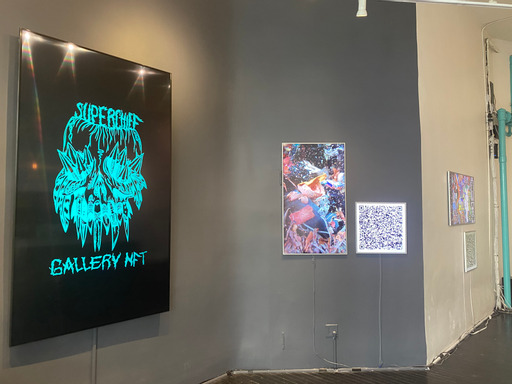
Rebecca: Shopify just announced they’ll allow selling NFts!
Ed: Yeah, the access is there. The importance of being a gallery and being a cultural center is that we really embrace and support the artists we believe in, the ones that speak to us, and the ones we really want to get behind. There will always be a purpose in supporting that and a value that we can bring to the table by bringing a community together and showing them something we love. That has its own inherent value.
Certain models may shift as the digital becomes brick and mortar and as more physical galleries begin to engage and work with NFTs. Since the model is really built off a “no overhead” scenario where there is no physical location -you don’t have lights, you don’t have gallery staff to install the works- a 50% cut doesn’t seem as reasonable. Why would you get the higher percentage if you don’t have the general costs associated with running a gallery? So the 15% approach makes a lot of sense, but as that relationship enters the physical gallery again, it would be interesting to see how it shifts and how physical time is considered in that. But I think that’s a future problem; right now, it’s about engaging with the artists we love and with the NFT community and cross-legitimize them in each other’s eyes to boost this moment for the art world.
(End of Part 1 in the Series)
Superchief Gallery NYC is a pioneer in the NFT gallery sphere and is located at 56 East 11th Street in NYC. They have worked with digital artists for six years and recently committed to the digital art frontier by opening the world’s first physical NFT gallery in NYC in March.
Please visit www.superchiefgallerynft.com
Featured Image Credit: https://www.instagram.com/superchiefgallery/


